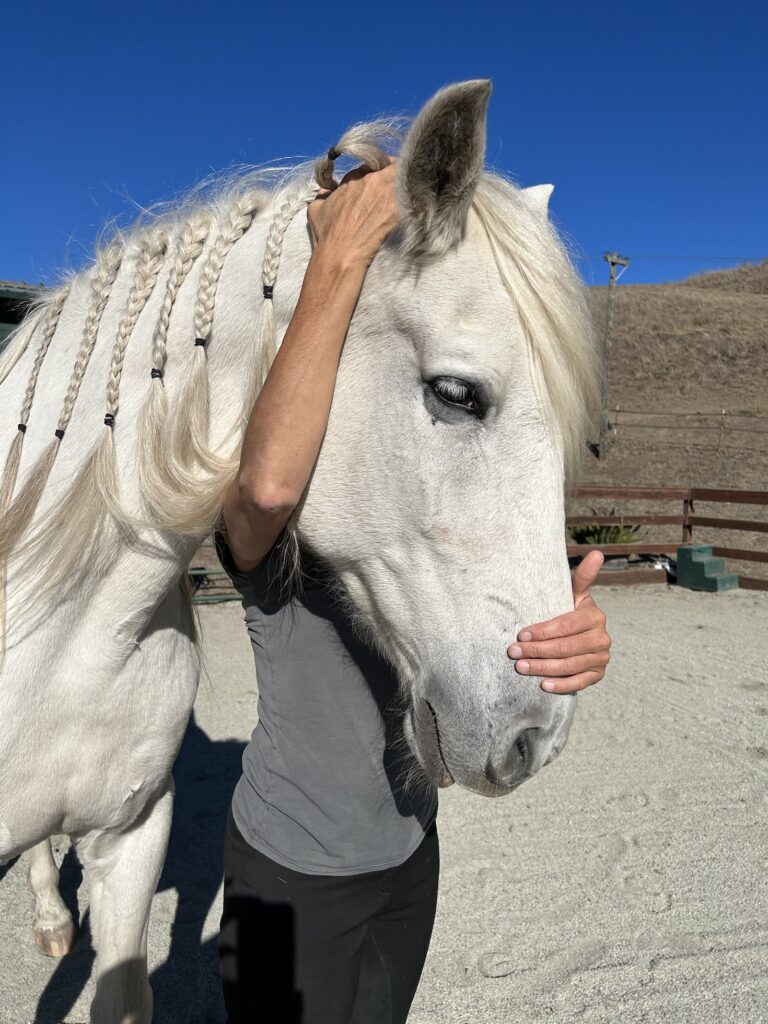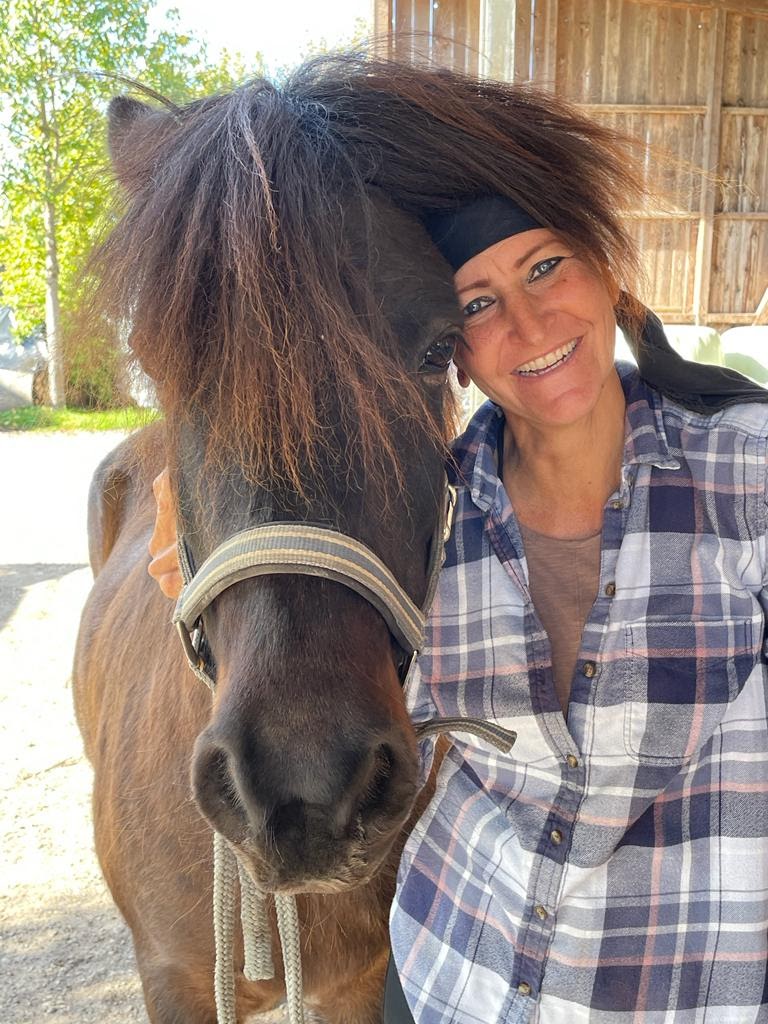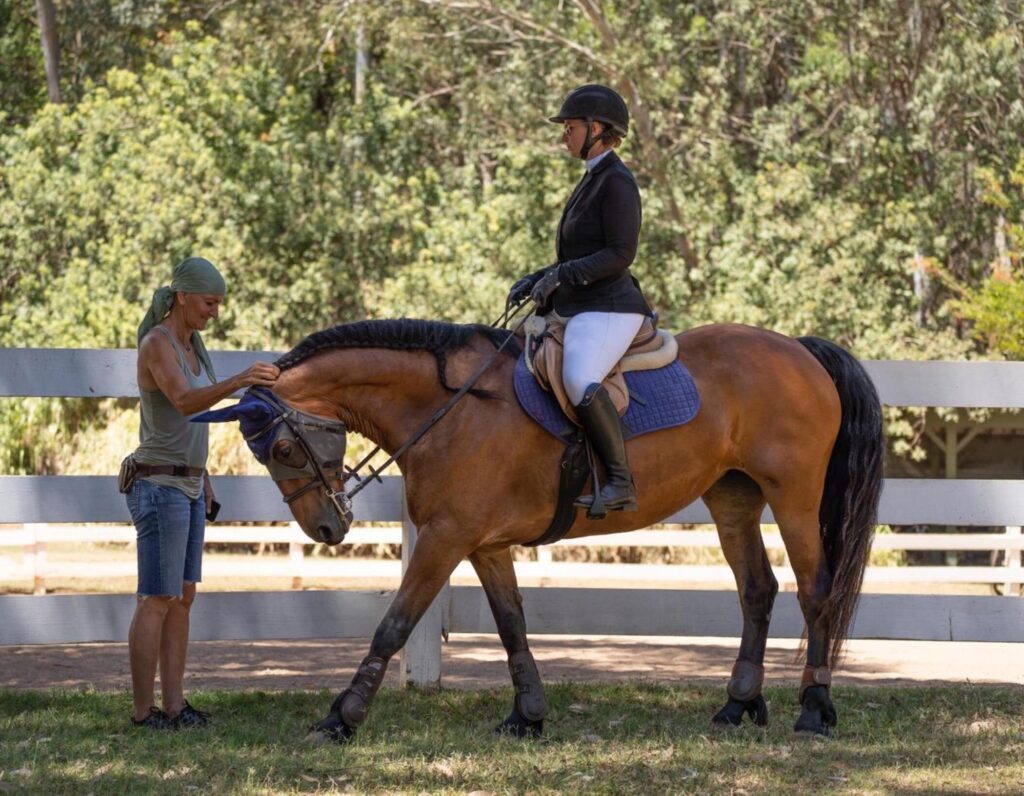CRANIOSACRAL OSTEOPATHY FOR HORSES
When I was a little girl, I wanted to be a veterinarian. But I ended up studying animal behavior and got a master degree in biology. It was Melia – a gentle 18-year-old retired polo horse – who made me realize, that by now I do have all the skills to help animals heal. They react beautifully to craniosacral osteopathy.
Melia had a stiff neck and could barely turn her head to either side. She was far away from the “carrot stretch” ideal. It was difficult to ride her in a straight line and she threw her head up before every little jump. I applied my palpation skills and the same principles and techniques I had been practicing on humans for 20 years. It was an exciting journey to learn how to adjust my experience and knowledge to the anatomy and physiology of a horse. I was amazed how immediate she responded to my treatment and how quickly we got lasting results.
I read many equine anatomy and osteopathy books since that time and treated every horse which came my way. Horses are sensitive beings and respond very well to gentle touch and craniosacral work. According to osteopathic theory every problem can be traced back to its original cause and must be resolved where it started. The goal of my treatment is to explore the interconnection of the musculoskeletal, visceral (organ) and craniosacral system and to create long-lasting changes in my client’s health. Imbalances in these systems may contribute to the development of complex neurological conditions. Pain and discomfort often trigger unwanted behavior in horses.
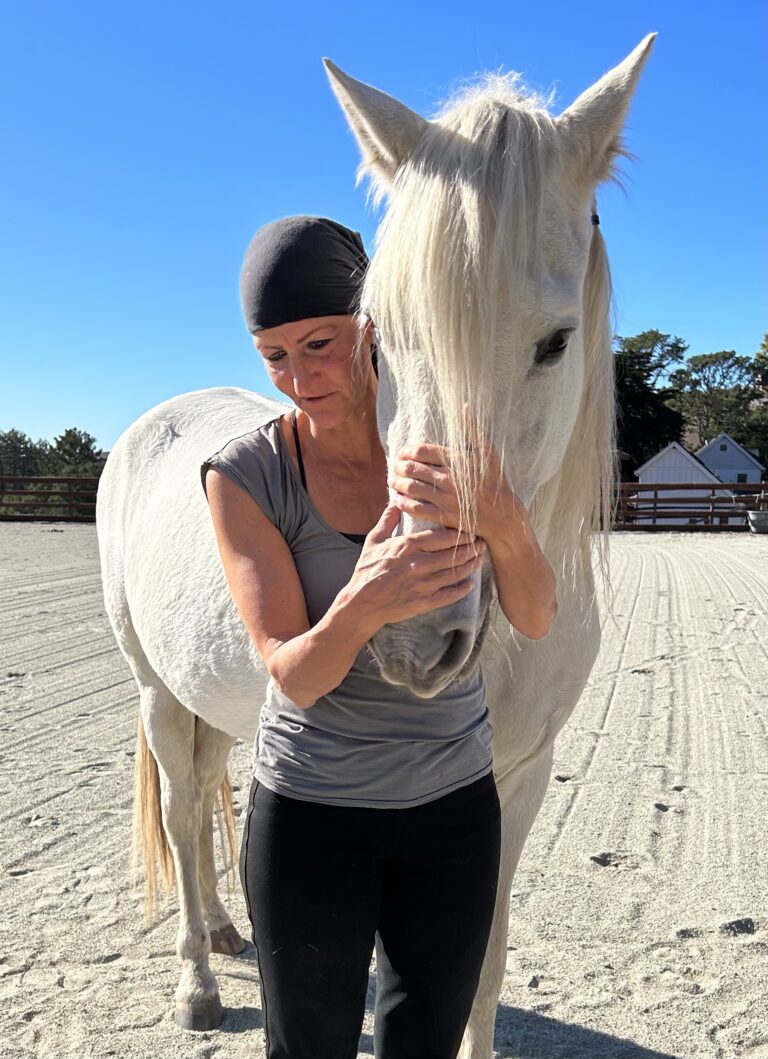

Individual Approach
I believe that each horse should be treated with an individual approach. There is no single solution that works for everyone. None of the horses I treated so far has exhibited the same patterns, compensations or underlying lesions. I evaluate each horse and look at its imbalances and restrictions before I come up with a treatment plan. Horses are a lot like people – they all have their own stories, personalities and preferences.
Each horse deserves to be listened to. Stillness, fine manual palpation and intuition will reveal the individual differences and health problems of each horse. When I discover the right structure and depth to work on, the horses relax deeply into my work. They surrender to the treatment in a beautiful way as soon as they feel that I reached the right point to address their issues. You can observe them releasing tension with licking, chewing or even jawing. They soon begin to close their eyes and let their lower lips drop. The horses stay still and connected for up to 45 minutes while I work on them. A truly beautiful experience to witness.
By relieving the pull of the fascia on the horse’s tissues, organs, blood vessels and nerves, the motion of the spine and the joints will be restored and the horse will be able to moves more freely. Craniosacral osteopathy, which focuses on the fluid-filled membranes in the skull and spine, can help restore proper balances within the body’s structure, thereby alleviating symptoms of insufficient coordination, lack of concentration, clumsiness, or tripping. This can often lead to healing or improvement in conditions like pain, head shaking or tilting, teeth grinding or lameness. Anxiousness, grumpiness, biting, kicking, bucking or other forms of aggression don’t have to be a lifelong battle and can be improved with the right treatment and training.
Treatments as prevention
Craniosacral Osteopathy Treatments seek to prevent illness and to balance the body by recognizing early signs of disharmony. Osteopathy is the art of finding structures, that have lost their mobility and flexibility by gentle touch. Immobile structures on all levels and depth will eventually lose their natural functions. This allows practitioners of osteopathic techniques to identify possible problems before they show up in blood tests or imaging. Treatment of challenged structures early in the course of a disease can improve the overall health and the performance of a horse.
Treatments for horse and rider
I see a significant opportunity in treating both the horse and rider together. They influence each other deeply on a physical, mental and emotional level. In the long run, such cooperation helps both parties grow. But their Imbalances also keep them from moving forward. Both patients sometimes suffer from structural challenges, traumatic injuries and/or accidents. Sitting bareback on a horse, you can feel how the slightest weight shift in your sit bones will influence the horse. When a rider has a misalignment in her pelvis, it can affect the horse’s movement. A well-balanced rider is more likely to produce a well-trained horse and vice-versa. If we address these issues on both sides, you will feel more connected and safer in the saddle, and the horse will be able to listen to your finer signals. A win-win for both of you.
I believe that an osteopathic approach to animal health can be a valuable tool for horses and riders, and I hope that my services will contribute to a fulfilling relationship between the two. A holistic approach to pet care that stimulates the body’s own healing abilities is definitely worth a try and may be an effective addition to traditional veterinary medicine.
Testimonials
“While visiting Switzerland Barbara treated my very sensitive Mangalarga Marchador mare Zarin. Zarin showed tension and discomfort when groomed and ridden. Barbara’s work with the horses is very professional, careful and sensitive. Zarin calmed down considerably after just one session. She became much more relaxed when ridden and had no more sensitivity to touch when groomed. Her gaze became more open and she showed interest in work again. My Iceland gelding Brunnur moved more relaxed, supple and flowing and with a clearer rhythm after his treatment. Thank you very much Barbara! “
Karin, Switzerland
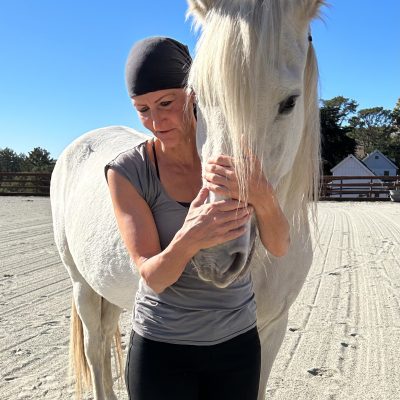
“My two year old gelding Indy was playing with his sister and got kicked hard in the throat area. The kick caused a lump in the size of a small orange. Hence, whenever he ate anything, Indy would cough. Barbara gently manipulated the throat area and Indy’s eyes would close half way every time. The treatments seemed very comforting and effective. Indy does not cough anymore and the injury is barely palpable.”
Lori, Maui
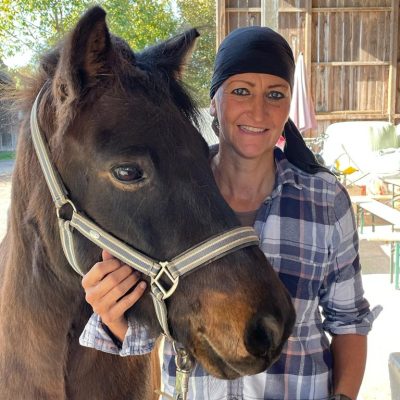
“With her loving and sensitive approach, Barbara immediately found the connection to my horses. She discovered the significant lesions and treated them carefully. It was obvious that the patients were feeling much better right away. The success of the treatment was also noticeable in the long term: the back activity had improved significantly in all horses, the movements were freer and more relaxed. I was able to make my training more efficient and the horses were clearly happy about their new possibilities of movement. It is very nice to feel how they are regaining confidence in their bodies!”
Eva, Switzerland

